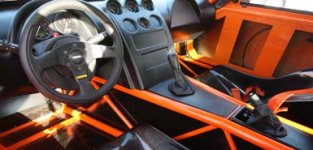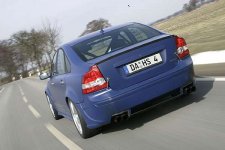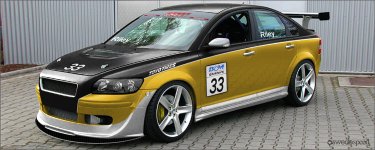Fantastic car for sure and i am sure they are a blast on the track with their low weights but i always feel a bit sorry for lotus owners on public ways. The cars are so little that they dont fit on public roads (sorry  )
)
You are using an out of date browser. It may not display this or other websites correctly.
You should upgrade or use an alternative browser.
You should upgrade or use an alternative browser.
Knut Omdal Tveito
Premium
Thats true
But I think this car (especially the LS engines) would be overpowered for road tires. I feel this one is made for racing or trackdays, with slicks and high downforce.
But I think this car (especially the LS engines) would be overpowered for road tires. I feel this one is made for racing or trackdays, with slicks and high downforce.
Great looking car for sure! lus1:
lus1:
Looovely car !! Could be fun to drive around the Nordschleife in it ! 
W
Wido Rossen
-
Wido Rossen
Fastest car in the world.
Recently, there has been a lot of buzz around electic vehicles, with companies like Tesla or Fisker working on some really beautiful and fast electric coupes and sedans. So who would’ve expected this? One of the world’s fastest street legal electric vehicles is a modified 1972 Datsun 1200 coupe. Using special lightweight lithium ion batteries originally developed for electric hand tools, John Wayland’s White Zombie (that’s the Datsun’s name) can run the 1/4 mile in under 11.5 seconds, with a trap speed of more than 114 miles per hour. Not to mention that the electric motors produce full torque basically at 0 rpm, so John has a lot of fun taking out all sorts of cars with hundreds of ponies under the bonnnet.

Eat my dust maserati...
[media]http://www.youtube.com/watch?v=vGQSQAz9v6c&feature=related[/media]
and more
[media]http://www.youtube.com/watch?v=1Fmy4tWvr8c[/media]
Recently, there has been a lot of buzz around electic vehicles, with companies like Tesla or Fisker working on some really beautiful and fast electric coupes and sedans. So who would’ve expected this? One of the world’s fastest street legal electric vehicles is a modified 1972 Datsun 1200 coupe. Using special lightweight lithium ion batteries originally developed for electric hand tools, John Wayland’s White Zombie (that’s the Datsun’s name) can run the 1/4 mile in under 11.5 seconds, with a trap speed of more than 114 miles per hour. Not to mention that the electric motors produce full torque basically at 0 rpm, so John has a lot of fun taking out all sorts of cars with hundreds of ponies under the bonnnet.

Eat my dust maserati...
[media]http://www.youtube.com/watch?v=vGQSQAz9v6c&feature=related[/media]
and more
[media]http://www.youtube.com/watch?v=1Fmy4tWvr8c[/media]
B
Brad Johnson
-
Brad Johnson
Fastest Electric car is a Scalextric int it ? 
Amazing with the amount of grip it gets from the start there lool.
Amazing with the amount of grip it gets from the start there lool.
Dave Stephenson
Premium
Zolfe Orange
ENGINE 2261cc, four cylinders
POWER 285bhp @ 7500rpm
TORQUE 210 lb ft @ 6000rpm
TRANSMISSION Six-speed manual
FUEL/CO2 Not available
ACCELERATION 0-60mph: 3.8sec
TOP SPEED 161mph
PRICE £40,250
TAX BAND Not available
VERDICT Shaping up to be a brilliant driver’s car
RELEASE DATE Orders taken from spring 2009
Continues here
Zolfe Homepage
ENGINE 2261cc, four cylinders
POWER 285bhp @ 7500rpm
TORQUE 210 lb ft @ 6000rpm
TRANSMISSION Six-speed manual
FUEL/CO2 Not available
ACCELERATION 0-60mph: 3.8sec
TOP SPEED 161mph
PRICE £40,250
TAX BAND Not available
VERDICT Shaping up to be a brilliant driver’s car
RELEASE DATE Orders taken from spring 2009
The Zolfe Orange might sound like a car made in Germany or Switzerland, but it’s actually an all-British project built in the West Midlands. And before pessimists dismiss it as a non-starter in the present climate, consider this: it accelerates faster than a Ferrari F430, costs less than a Porsche Boxster and has been developed by the man responsible for the Caterham 7 — the most fun four-wheeled machine in the world. Suddenly, the compact little Zolfe looks like being an affordable sports car at just the right time.
Because it’s so light, the £31,625 base model gets to 60mph in just 5.3sec, while the higher-performance £40,250 version makes it in 3.8sec. City traders faced with the novel concept of a budget should take note: that’s well within supercar territory.
The key to its performance is size: the Zolfe is small, but it’s perfectly formed. Everything you need to have fun behind the wheel is there, anything you don’t has been thrown out. Slightly smaller than a Mazda MX-5 and a little narrower than a Lotus Elise, the Zolfe has a nicely planted, low-to-the-ground stance.
The styling is pleasingly retro without being an embarrassing pastiche of past glories. Indeed, the attention to detail lavished on the Zolfe is impressive. Who, for example, would take a perfectly acceptable set of wheels — an off-the-shelf item — and machine them down to save weight? Zolfe would, as they’re designed for a much heavier vehicle than this flyweight 698kg two-seater. The fully independent suspension was developed with the help of John Miles, a former grand prix racing driver and engineering expert, who worked on Lotus road cars.
The result of all this is a car with simply tremendous potential. Better still, anyone can drive it. Where most sports cars are designed around racehorse jockeys, the Zolfe is capable of accommodating a 6ft 4in driver wearing a crash helmet. The chassis is slightly stiffer than a Lotus Elise’s, which is very good indeed, and the weight distribution is a near-perfect 52% rear, 48% front (with a driver on board).
Continues here
Zolfe Homepage
Attachments
Hmm, the front looks like an old Porsche and the back looks a lot like a Z4, I like it, send one over.
Yes please!
Just imagine this thing in power slide 
:bulgy-eyes:
Yipe. Is that thing road-legal?
Yipe. Is that thing road-legal?
:kewl: Oh yeah, more letterboxes on the street  Tuned on the inside too?
Tuned on the inside too?
To be sure, but there was no info on that - I will see what I can dig up :eyebrows:Tuned on the inside too?
Humm, still no stats, but more photos.
Attachments
The black/gold'ish is ace.. Thanks William
Opel Insignia OPC
Autoweek released a very fuzzy picture that shows the upcoming Opel Insignia OPC.
Impressed? Under the hood there will be a V6 with 300bhp stored, sticking to the tarmac with AWD. So yes, impressed :woop:
Autoweek released a very fuzzy picture that shows the upcoming Opel Insignia OPC.
Impressed? Under the hood there will be a V6 with 300bhp stored, sticking to the tarmac with AWD. So yes, impressed :woop:
Attachments
Marcel Hulsbergen
#111 | Roaring Pipes Maniacs
Maybe my next car if it comes in a diesel and break. This is the first Opel i start to like.
OPC is petrol only  For diesels turn to you local dealer or "leaseboer"
For diesels turn to you local dealer or "leaseboer"
Marcel Hulsbergen
#111 | Roaring Pipes Maniacs
Grrrrr, i keep hope, atleast my RS is also diesel, I think if they want to survive they have to make a diesel for me.
Latest News
-
How One Announcement Quadrupled Forza Horizon 4's Player BaseIt is exactly one month until Forza Horizon 4 will no longer be available to purchase online...
- Angus Martin
- Updated:
- 2 min read
-
Assetto Corsa EVO New Car Configurator In The PipelineAfter this year's sim Racing Expo, the excitement around Assetto Corsa EVO has continued to...
- Connor Minniss
- Updated:
- 2 min read
-
Steering Wheel Showdown: Which Wheel Would You Like A Sim Racing Version Of?Sim racers have plenty of choice when it comes to hardware. There are a number of cool steering...
- Yannik Haustein
- Updated:
- 2 min read
-
Gran Turismo 7: Yamauchi Teases New Cars For Update 1.53It is that time again when Gran Turismo series producer Kazunori Yamauchi teases us with an...
- Luca Munro
- Updated:
- 5 min read
-
Automobilista 2: Incoming DLC Will Have Free Trial PeriodWith the big v1.6 update, plenty of new content is coming to Automobilista 2. Players who are on...
- Yannik Haustein
- Updated:
- 2 min read
-
Le Mans Ultimate Online Subscriptions Expected To Arrive In December 2024Ahead of the expected December update to Le Mans Ultimate, Motorsport Games reported its Q3...
- Yannik Haustein
- Updated:
- 2 min read
-
4 Good Value Sim Racing Cockpits Under €500Sim racing can be expensive. But fear not, if you do not have thousands of Euros, Pounds or...
- Connor Minniss
- Updated:
- 6 min read





















